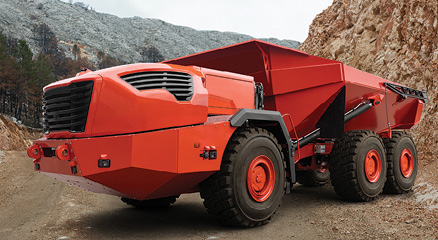Will mining be fully autonomous in the future?
Humans have been mining to extract the Earth’s raw materials for thousands of years. Over that time, things have changed a little from when Homo sapiens were digging for stones to create makeshift tools. As technology became a little more sophisticated, mining capitalized on the opportunities it offered to yield better outcomes and enhance the safety of workers in the industry.

Mining is essential to our lives in so many ways, and though the industry is often put under the spotlight for its environmental and ethical principles, it is unquestionably a practice that is here to stay. Vast improvements have already been made to processes and policies across the sector, with a particular focus on eco-consciousness to limit the damage mining can do to the planet. However, what is clear is that there is still a long way to go, raising questions around what the mining industry of the future will look like.
In this article, we will discuss how technology, robotics, and automation are already having a major influence on the mining landscape — exploring whether there is the potential for the industry to become fully automated in the future, as technology plays a more central role in determining outcomes. While there are still a lot of unanswered questions around the use of autonomous equipment within the industry, leaders are growing increasingly optimistic about its implementation going forward.
How is automation currently being used?
Automation is not by any means a new phenomenon in the mining industry. It is already being used in so many ways to speed up processes, reduce margin of error, and enhance safety on site. There are a range of vehicles and other pieces of equipment that are now commonplace at mining sites. Fitted with robotic components, trucks, loaders, excavators, drilling rigs, and a range of other pieces of essential equipment can be operated remotely to both limit the threat to human health and mitigate some of the wider social impacts of the practice.
By integrating this advanced software alongside effective communication tools to keep things running smoothly, autonomous mining equipment can ensure that operations can continue around the clock.
Why is automation so important?
As we touched upon earlier, there are lots of benefits to automating mining processes. One of the key drivers behind its widespread use is the safety benefits it can offer. Giving more workers the opportunity to carry out their jobs from safer (often remote) locations mitigates lots of the health risks associated with mining. In addition, machine learning artificial intelligence (AI) can predict system failures to prevent potentially disastrous accidents from happening. AI and autonomous technologies have gone a long way toward ensuring the mining industry is in a better position than it has ever been regarding worker safety.
Beyond the safety considerations and helping to create better working conditions, modern technology can also be utilized to improve energy efficiency, enhance productivity, and reduce instances of machine failure and downtime. All these things can ultimately benefit mining companies by boosting their bottom line while also reducing their environmental impact.
What does the future hold?
While it is probable that certain aspects of the mining industry will become fully automated in the not-too-distant future, we are unlikely to see a sector free from human intervention any time soon. Human input is essential in so many ways to keep operations running smoothly. However, by integrating more autonomous mining equipment, the overall goal will be to focus workers’ attention on more important tasks rather than the repetitive ones that come attached with more risks.
Automated processes are likely to become more commonplace at mine sites, meaning we may see humans take on fewer of the more dangerous tasks associated with the process. Instead, workers will be able to focus more of their time on the more complex strategy planning and high-level decision-making processes.
Leveraging technology for a safer future
The modern mining industry is facing lots of challenges — from talent shortages to safety concerns — that autonomous technology could go a long way to overcoming. Ultimately, if autonomous technology can continue to reduce the number of humans working in hazardous conditions, it surely will have a key role to play in the future of the mining industry.
Kathleen White is an independent business analyst who serves a variety of sectors. She earned a first-class honours degree in business and management from the University of Bristol.
Comments